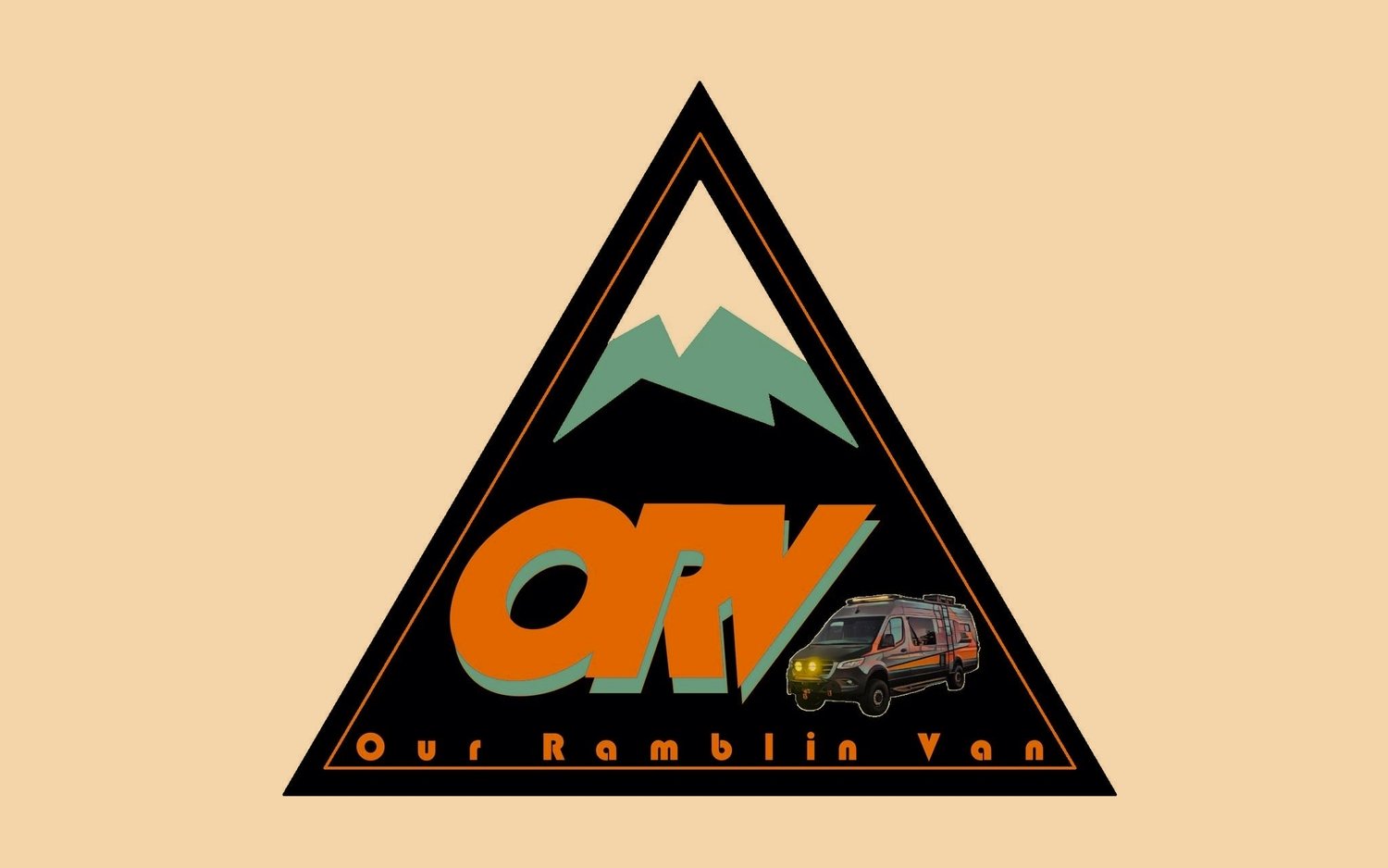Exiting, Stage Left
This afternoon, Our Ramblin Van is lounging comfortably on a wide flat valley floor carpeted by slate-grey pebbles. From our spot, we can hear the rushing waters of Exit Creek winding its way through the tumbled stones in its everlasting task of whittling sharp edges into smooth curves. Jutting up along the floor of the valley on both sides, rugged grey mountains cradle snow in their crevices and nestle into the thick blankets of green trees edging up their sides. This afternoon we’re resting comfortably beneath a partly cloudy sky right smack in the middle of the outwash plain of Exit Glacier. This morning, we took a stroll in Kenai Fjords National Park to get up close and personal with the toe of Exit Glacier and observe the way that ice carved the very valley we are camping in. In the space of a morning, we traversed the ages of this land’s transformation, from the smooth river rocks outside our door, to the striated cuts in the sheared off mountain side we walked on, to the icy crumbled face of Exit Glacier, sloughing itself into the valley below and suspending giant boulders above what will eventually be their final resting place, to the crushing white mass of the Harding Icefield, where unborn mountains are just peeking up from the alabaster sea of snow and ice. Looking at the smooth river rock of the valley floor outside the door makes me realize just how fleeting we are, really just a fraction of a moment in the life of this world. That is why it is important to me to capture glimpses of this ever-changing world and to record and share them. Maybe, in doing so, these fractional glimpses will last just a little bit longer and be just a tiny bit bigger than the fleeting thing that is me.
Let us move along with a few fun facts about the Exit Glacier before this just gets depressing. To have a glacier, you must first start with a big fat icefield and the Harding Icefield is that indeed. The icefield was formed over 23,000 years ago during the Pleistocene Epoch (I don’t know what that means either) and is named after U.S. President Warren G. Harding, why? Why not, the guy was the president after all. The Harding Icefield is the largest icefield that we have all to ourselves in the U.S. measuring 700 square surface miles and having a depth of 4000 feet. It is the source of 38 major glaciers. It receives over 400 inches of snow a year which does not melt, instead it crystalizes, compacts into ice, gets snowed on again, crystalizes, compacts and so on. After so many centuries of ice buildup, no wonder the Harding Icefield needs 38 release valves.
In the spring of 1968, the first documented mountaineering party succeeded in crossing the Harding Icefield and the weary expeditioners exited the icefield via an easily descendible glacier, and that is how the ‘Exit Glacier’ got its name, so no, it’s not the ‘Exit Glacier’ just because it is receding.
It’s the most frequently visited glacier in the U.S. as it lies in the Kenai Fjords National Park and is accessible by well-marked footpaths and without guide fees. We took the Glacier Overlook Trail to visit it. The Overlook trail is more Granny-bod friendly than the 9-mile round trip Harding Icefield Trail; you can do either park trail without guides. If you are adventurous and a good hiker, you can take a guided hike that will not only get you to the Icefield but will take you climbing on it. It’s important to know your limitations in these scenarios. The Overlook Trail was the right fit for us. All along the trail, there are signs marking where the toe of the glacier was found in different years as its recission began to be tracked. When you reach the overlook point, you are standing at the spot where the glacier’s toe was located in the year 2010.
It is interesting to note how the vegetation changes over the length of the trail, becoming shorter, less dense and finally sparse to none the closer to the glacier you get. We were also fascinated by the scraped, sheared off surfaces of the solid rock along the way and the odd large boulder appearing here and there atop the carved rock face. These ‘one of these things is not like the others’ rocks were plopped down here and there as the result of ‘plucking’ -which happens when the glacier picks up and incorporates rock fragments from the bedrock beneath it and deposits the material elsewhere as the ice moves and melts. The overlook and the returning loop trail of the trail give great views of the outwash plain and the glacier’s descent.
As the Exit Glacier recedes, the Park Service has adapted the trail to stretch farther out in order to keep the glacier in view. The receding of the glacier is prompting the Park Service to make plans to adapt the park to a possible different use in the future. In the meanwhile, visits to the glacier are increasing each year. All of us trying to catch our own fractional glimpse of it and share it in attempt to make it last a little longer.

